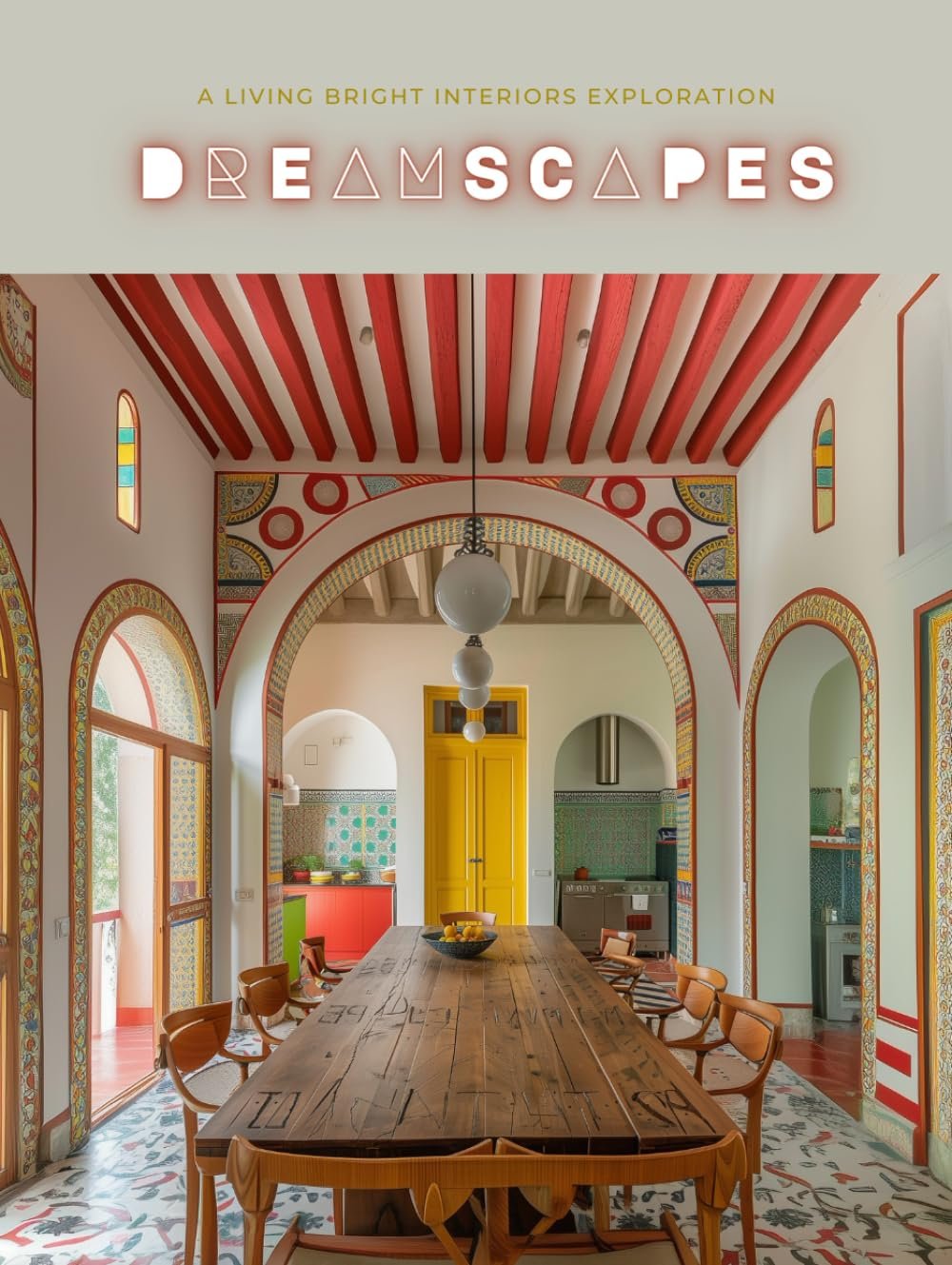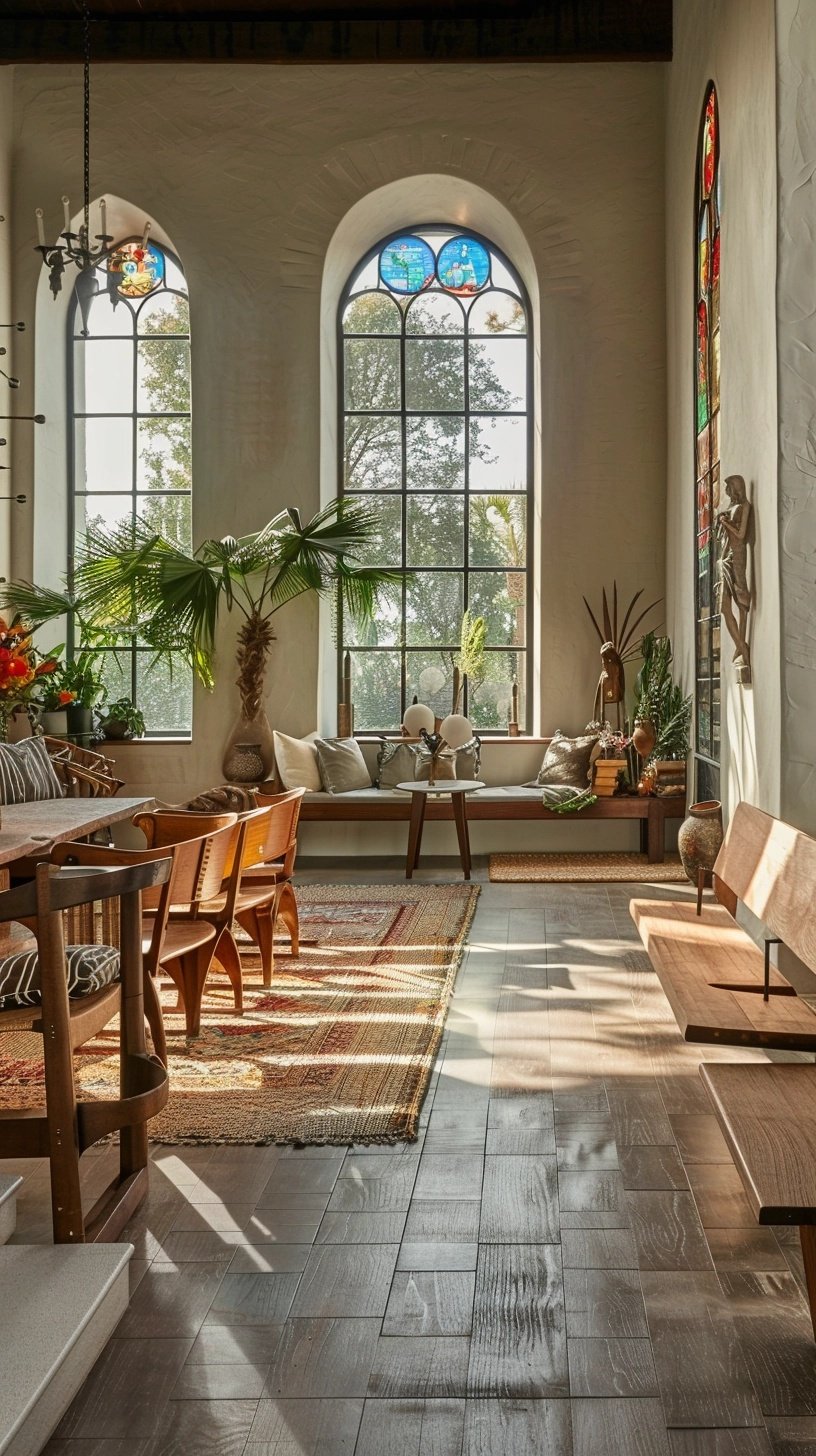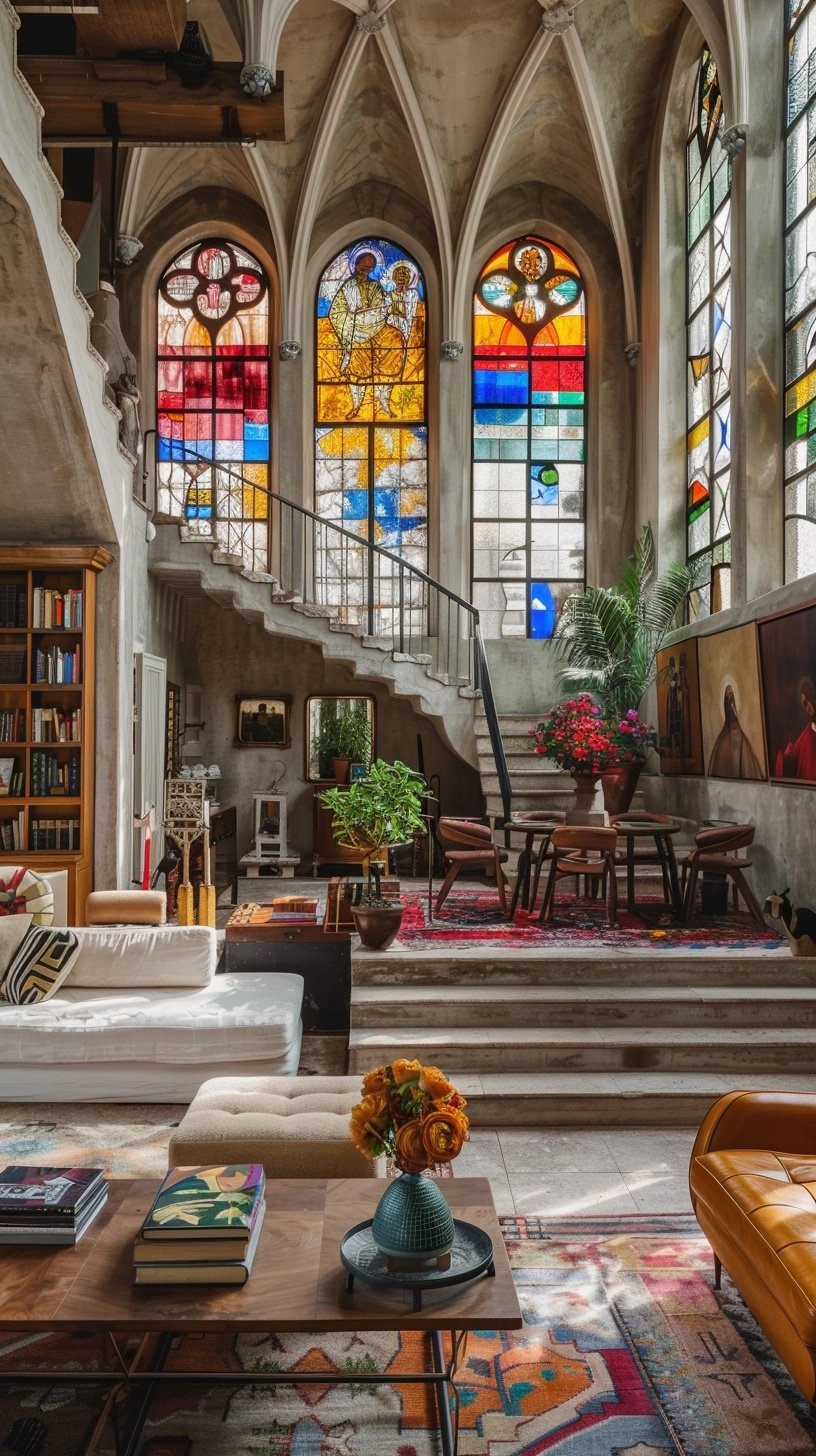Reimagining Sacred Spaces: Designing an Abandoned Church with Natural Neutrals
Discover how to transform an abandoned church into a serene sanctuary using natural elements and repurposed stained glass.
At Living Bright Interiors, I am known for my love of vibrant colors. However, when it comes to redesigning an abandoned church, I would lean into natural neutrals like linen fabrics, unfinished woods, and organic materials. The rich colors would emanate from the repurposed stained glass, allowing the history and spirituality of the space to shine through.
Download our FREE "Ultimate Interior Design Style Guide" here and start transforming any space into a soulful retreat!
Everything you love about our design explorations is now beautifully compiled in Dreamscapes . Get the complete collection in one stunning coffee table book, Now Available on Amazon
See your favorite design explorations all together in new coffee table book Dreamscapes Now Available on Amazon
Embracing Natural Neutrals
Using a palette of natural neutrals creates a calming and welcoming atmosphere. Materials like:
Linen Fabrics: Soft and breathable, perfect for upholstery and draperies.
Unfinished Woods: Adds warmth and texture, maintaining a connection to nature.
Organic Elements: Incorporate stone, plants, and other natural features.
This approach honors the original architecture while making the space feel fresh and inviting.
Explore more on sustainable design in our blog post: Embracing Organic Luxury: Sustainable Interior Design for Contemporary Living.
Enjoy the designs you see here? Dreamscapes brings them all together in one stunning book, Now Available on Amazon
The Magic of Repurposed Stained Glass
The existing stained glass windows are not just decorative elements; they are storytellers of the church's legacy. By repurposing and highlighting these features, we can:
Illuminate Spaces: Use the colorful light patterns to create dynamic interiors.
Artistic Focal Points: Frame sections of stained glass as standalone art pieces.
Blend Old and New: Combine historical elements with contemporary design.
For inspiration on blending history with modern design, read our blog on Reimagining Home Design: The AI-Driven Path to Personalization.
Download our FREE "Ultimate Interior Design Style Guide" to unlock expert tips on using natural neutrals and repurposed materials in your designs!
Love the designs you're seeing? Find them all in Dreamscapes , our new coffee table book, Now Available on Amazon
Creating a Serene Sanctuary
Transforming an abandoned church involves thoughtful consideration of space utilization:
Open Floor Plans: Preserve the vastness of the interior for communal areas.
Private Nooks: Create intimate spaces for reflection and solitude.
Sustainable Practices: Use eco-friendly materials and energy-efficient systems.
Check out our post on Biophilic Design: Reimagining Urban Living Through Nature's Lens for more ideas on integrating nature into interior spaces.
All your favorite design inspirations are beautifully captured in Dreamscapes . Get your copy on Amazon today
Bringing the Vision to Life
If you're captivated by these design ideas, you'll love our coffee table books:
📖 Dreamscapes: A Living Bright Interiors Exploration — Dive into a world of stunning designs, now available on Amazon.
📖 Pre-order "Sit On It" — A provocative exploration of seating design.
Shop our curated selection of home décor to bring these concepts into your own space.
Enhance your design skills with our courses:
🏠 AI Dream Home — A beginner's guide to integrating AI into home design.
🎓 Virtual Interior Design Masterclass — Advanced training for professional designers.
Stay connected with us:
📸 Follow us on Instagram for daily inspiration and behind-the-scenes looks at our projects.
Download our FREE "Ultimate Interior Design Style Guide" now and start your journey toward creating transformative spaces!
Explore More from Our Blog
Embracing the Dark Side: Luxurious All-Black Interior Design
Curating Captivating Spaces: The Art of Bold, Layered Design
By focusing on natural neutrals and the beauty of repurposed stained glass, we can transform an abandoned church into a space that is both respectful of its history and rejuvenated for modern use.
Let's reimagine sacred spaces together.
Download your FREE "Ultimate Interior Design Style Guide" here and start creating your dream space today!






































